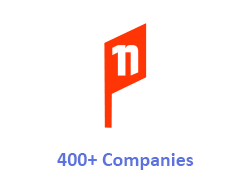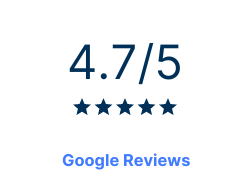
When you think about it, everything is a project. It could be a personal overseas trip or a team initiative to digitise forms and documents.
Managing any project takes time and effort. The idea is to ensure everything comes together on time and within budget. All while keeping stakeholders updated - from your boss to your customers, friends or family.
Often, projects get thrown by the wayside by challenges like a growing list of new requirements, also known as scope creep, conflict between those involved and the need for more documentation.
Having a project plan is critical to defining what a job well done looks like. It offers guidance on how to stay organised at work. Planning your project helps you clarify your objectives and milestones, which you can refer to when reviewing the scope and resolving disagreements.
Effective project management is essential for success. Effective use of project management software can help teams streamline processes, collaborate more efficiently, and ultimately achieve better results.
This comprehensive guide explores how to use project management software effectively and maximise its benefits for your organisation.
Step 1: Create a Project Plan
Before diving in, it's crucial to have a well-defined plan in place. The Project Management Institute shares that a project plan is when you put ideas to paper on how the project will be executed, monitored, controlled and closed.
- Organise your resources. Take stock of your team members' skills, availability, and any external resources needed. Determine your budget for the project and any project management software you can use. Ask about any external support you can access, like consultants, freelancers or agencies. Understanding your resources upfront will help you allocate tasks more effectively and avoid bottlenecks later.
- Define the project scope. Clearly outline the project's goals, deliverables, and objectives to ensure everyone is on the same page. This helps prevent scope creep and keeps the project focused and manageable. Determine where the project begins, where it ends (at which point another project can start), what processes will be affected, and, equally significantly, what is outside the project's scope.
- Identify the jobs and the right people for them. How do you match the roles to the resources available to you? Doing so sets people up for success and prevents future conflict. For each task, you can create a RACI chart. Forbes Magazine describes a RACI chart as a responsibility assignment matrix identifying who is Responsible, Accountable, Consulted and Informed.
Microsoft Project offers Project Planning templates that provide frameworks based on best practices for specific types of projects. Examples include a Simple project planning template, Agile project planning template, Product development and launch and Project goals and objectives. You can become familiar with and do advanced setups using these templates when you join one of the Microsoft Project courses at Nexacu.
Step 2: Create a Project Schedule
Once you clearly understand your resources and project scope, it's time to create a project schedule as an overview and on your project management software like Microsoft Project.
- Establish a timeline for the project. And break it down into smaller, more manageable tasks. Be realistic about your deadline and the time required for each task, considering any dependencies or constraints.
- Find the right project management tools. This is key to creating an effective schedule. Countless options are available, from simple to-do list apps to comprehensive project management platforms. Choose one that aligns with your team's needs and preferences and offers task tracking, collaboration, and reporting features.
- Publish clear and accessible schedules for all team members to see. Whether you use a digital calendar, Gantt chart, or project management software, ensure everyone knows what they're responsible for and when tasks are due. This transparency fosters accountability and helps keep the project on track.
- Organise your resources in one place. Some project planning software lets you set a budget and track people's time against that budget. You can also add team members to the project and assign them the different tasks, with descriptions and deadlines for each. You can attach relevant documents.
Step 3: Work with Deadlines and Priorities
Deadlines are essential for keeping projects moving forward and ensuring timely delivery.
- Define priorities and deadlines for each task and milestone. Identify the most critical tasks and allocate resources accordingly. This empowers people to say yes to mission-critical and impactful requests and no to nice-to-haves.
- Communicate well. You can do this through your project kickoff meeting and succeeding project updates. During the kickoff, you can introduce the project's why, what, how and when. You can also present insights from your pre-work, such as your resource assessment and initial project milestones discussions.
- Set realistic expectations. It's essential to be mindful of your team's capacity and avoid overloading them with unrealistic deadlines. If your team has experience with similar projects or tasks, these can inform your team of manageable lead times.
- Utilise digital Kanban boards. This refers to a visual system for organising workflows. Created in a Toyota Motors manufacturing plant, the method takes its name from the Japanese word for ‘sign’ or ‘billboard’. In a digital workspace like your project management software, you can create virtual Kanban cards to represent tasks that form part of a larger project like, "write and publish a blog post on x topic" or "create an online survey."
Step 4: Measure Progress Regularly
You can't manage what you can't measure. Metrics like task completion percentage, customer satisfaction or website views help the team stay on track and identify concerns.
- Set milestones and checkpoints. Some teams prefer quick daily catchups called Scrum meetings to voice what each member has done, will do, or any roadblocks they need help with. Others meet weekly throughout the project timeline to assess progress, grab data from their dashboard, and adjust plans as needed.
- Identify and embrace your team's differences. Varying perspectives and disciplines let the team develop creative solutions to a problem. You can also leverage each person's strengths for each task and offer training, support or the complement of another team member in other areas. This proactive approach helps maximise productivity and efficiency and helps avoid unhealthy conflict.
- Ask for feedback. Encourage open and two-way with your team members throughout the project lifecycle. This lets you detect potential problems, ensures you've considered all available options and builds team morale. Constructive criticism helps you improve processes and workflows for executing tasks, getting approvals and consulting stakeholders.
Step 5: Be Agile and Adaptive
In today's dynamic business environment, agility is key to success. Technologies evolve rapidly, economies shift, and so do businesses.
- Regularly examine your team's productivity and processes. Be willing to adjust your workflow. Address any problems or roadblocks before they escalate into more significant issues.
- Produce a minimum viable product and iterate. For example, some teams prefer to quickly launch a simple 5-page website that they will later expand in phases based on stakeholder comments, customer interactions or movements in the industry.
- Delegate work accordingly. From assessing your resources and matching the right people to the right jobs, you can ask for external support when needed. Scenarios may involve team members being assigned elsewhere or needing to attend to personal matters. You should factor these into your project planning and find lifelines you can tap or items in your scope that you can deprioritise.
Step 6: Document Everything
Documentation gives your project clarity and accountability. It helps trace who did what and provides a fuller picture of what happened in different phases.
- Get things on paper. You could be physically jotting down ideas and later transferring them to a virtual document. Or working directly on your project management tool. Getting things in writing means putting thoughts around your expectations, listing them, and having the project team agree.
- Keep detailed records. You can use your project management tool to write project plans and schedules. You can keep meeting minutes and notes on decisions made. This keeps the team on the same page and provides a valuable reference point for future projects.
Having a project plan and implementing project management software is a powerful way to improve project outcomes. With these in place, you can streamline processes, enhance collaboration and maximise efficiency.
By following these steps and adopting best practices, you can harness the full potential of project management software and achieve greater project success.
Learn to maximise your use of project management software through the Microsoft Project courses at Nexacu. Explore and gain a credential for different project management methodologies through the Certified Project Management Professional course at Lumify Learn.
 phone
phone
 email
email
 enquiry
enquiry
























